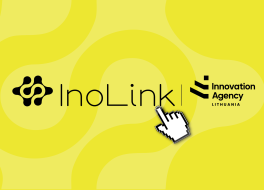Clusters in Lithuania: 5 Trends

According to the latest study commissioned by the Agency for Science, Innovation and Technology (MITA), 64 clusters are identified in Lithuania. Several years ago, creation of clusters in Lithuania was more or less experimental activity. Now, however, it is forecasted that the impact of clusters on the Lithuanian economy is growing.
“Clustering initiatives are expanding in scope, companies are increasingly active and courageous in pooling their resources together. Clusters use their experience to focus on research and innovation, penetration of new markets,” commented Kęstutis Šetkus, director of MITA.
The number of mature clusters is growing
MITA commisioned VšĮ “Pokyčių tyrimų institutas” to carry out a Lithuanian clusterization study (hereinafter – the study). The study states that clusterization processes in Lithuania accelerated in 2010-2015, when organizations got access to funding instruments for the development of clusterization in Lithuania. At the peak, in 2016, 75 clusters were identified in Lithuania. During the preparation of the Lithuanian clusterization study, 64 clusters were identified in Lithuania and 48 of them were categorized as active.
“This natural evolution is a good sign. We see that remaining clusters are strong, motivated and focused on the quality of performance. According to the study, 3.1% clusters can be considered as mature, 87.5% in active innovative development stage,” described the situation dr. Lina Skeberdytė, cluster development coordinator of the MITA project Innovation Networking Promotion and Development (InoLink). According to her, maturity of Lithuanian clusters is already being recognised at the international level: two Lithuanian clusters have been certified and have acquired the EU Bronze Label of Excellence.
The number of cluster members increases
The updated conception of Cluster development in Lithuania stipulates that the cluster should consist of at least 5 members. The study estimates that an average cluster in Lithuania has 13 members. About a half of the clusters connect 20 members, but there are some that have 30 or 40.
“Recently clusters not only focus on maturity, but also the attraction of new members. For example, most of the 14 clusters that participate in the InoLink project attracted at least one or more members this year,” said dr. L. Skeberdytė. According to L. Skeberdyte, clustering is a positive phenomenon: “Although large clusters face their own challenges, the competences brought by each member contribute to the higher cluster’s capabilities.”
R&D infrastructure is improving
According to the study, R&D, new product development and improving competences of clusters’ members are major factors of success. The study also found that in recent years clusters have focused on building a shared and open R&D infrastructure: new equipment is being acquired, existing laboratories are being expanded. High investments in R & D infrastructure are mainly related to the available EU funds. For example, following the recent call from Inoklaster LT six cluster projects were rewarded with EUR 5.45 million for improvement of research, development and innovation (R & D & I) infrastructure.
Wider network of international partnerships
International partnerships and cross-sectoral development are the strategic objectives of this period in both the EU and Lithuania. Lithuanian clusters are increasingly focusing on participation in international partner search missions and international exhibitions. According to Dr. L. Skeberdytė, surveyed Lithuanian clusters recognized some advantages of international initiatives: the possibility of participating in larger projects, better reach of clients, increasing sales. International partnerships has already proved to be a success for Lithuanian clusters, i.e., the Photovoltaic Technology cluster together with German companies has created a highly perspective solution for integrating solar modules into buildings (facades) and are working on the solar cell technology project.
Cross-sectoral cooperation
Although mostly very small, small and medium enterprises are involved in clusterization processes, science, education and governmental institutions are becoming more and more important members in clusters. According to the study, most clusters in Lithuania are operating in the fields of manufacturing and engineering, ICT, energy and construction, and creative industries. It is estimated that about one third (34.4%) of clusters are engaged in cross-sectoral activities.
“Cross-sectoral clustering is important in two respects. First, partnerships of this type promote the creation of new value chains and help SME’s compete in a global context. Secondly, cross-sectoral partnerships encourage innovative solutions that can be used to solve not only local, but global problems that occur in the modern society,” said MITA director K. Šetkus.



